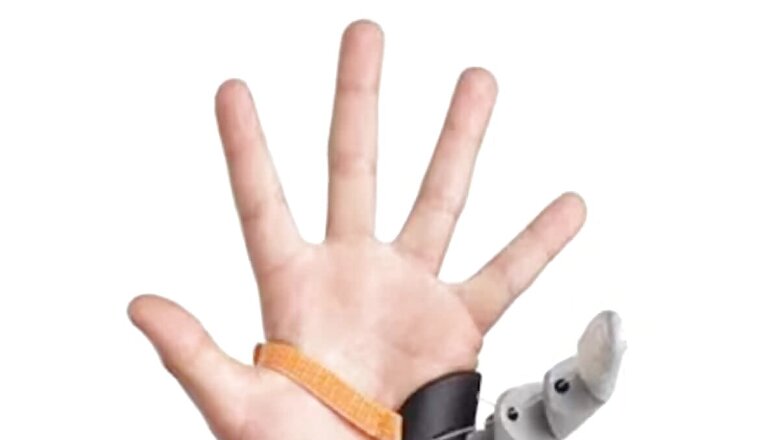
views
The twenty-first century has turned out to be the era of artificial intelligence and augmented reality. Corporations like SpaceX, Google, Facebook, and OpenAI are using these technologies to invent groundbreaking products that are changing the course of human life on the planet. These technologies are also used in the development of advanced prosthetics. The University of Cambridge developed a robotic 3D-printed thumb that can be used to pick up multiple objects and perform certain tasks with its help. The thumb is named the third thumb, and it grabs headlines as it is expected to ease up the daily work done with one hand. The robotic third thumb is controlled by special sensors under the toes.
The Third Thumb is worn on the opposite side of the hand, from where the actual thumb is located. It is controlled by the pressure sensors that are placed under the big toes. The main agenda of this investigation is to perform tasks with one hand that are impossible or difficult to do without the help of both. Opening a bottle, holding a glass, or peeling fruits can be done with this extra addition to the hand.
According to the researchers, the Third Thumb movement depends on the user wearing it. The movement is directly proportional to the pressure applied to the sensors. As soon as the pressure releases, the Thumb returns to its natural position. A study on 596 participants, aged three to 96, revealed that the subjects learned to use the Thumb effectively within a few minutes.
Professor Tamar Makin from the Medical Research Council’s (MRC) Cognition and Brain Sciences Unit at the University of Cambridge said in an interview, “To ensure everyone can benefit from these exciting advances, we need to explicitly integrate and measure inclusivity during the earliest stages of research and development.”
Shedding light on the accessibility and usability of the Third Thumb, prosthetics and augmentation specialist at Cambridge’s Plasticity Lab, Dani Clode, said, “It’s equally important that these devices are accessible and functional for a wide range of users. Additionally, they should be easy for people to learn and use quickly.” She is also the lead designer of the Third Thumb.
Professor Tamar Makin and his colleagues began the invention to build a product that can help people who have lost their arm and struggle with everyday tasks. In their research paper, they wrote, “Technology is changing our very definition of what it means to be human. Machines are increasingly becoming a part of our everyday lives and even our minds and bodies.”


















Comments
0 comment